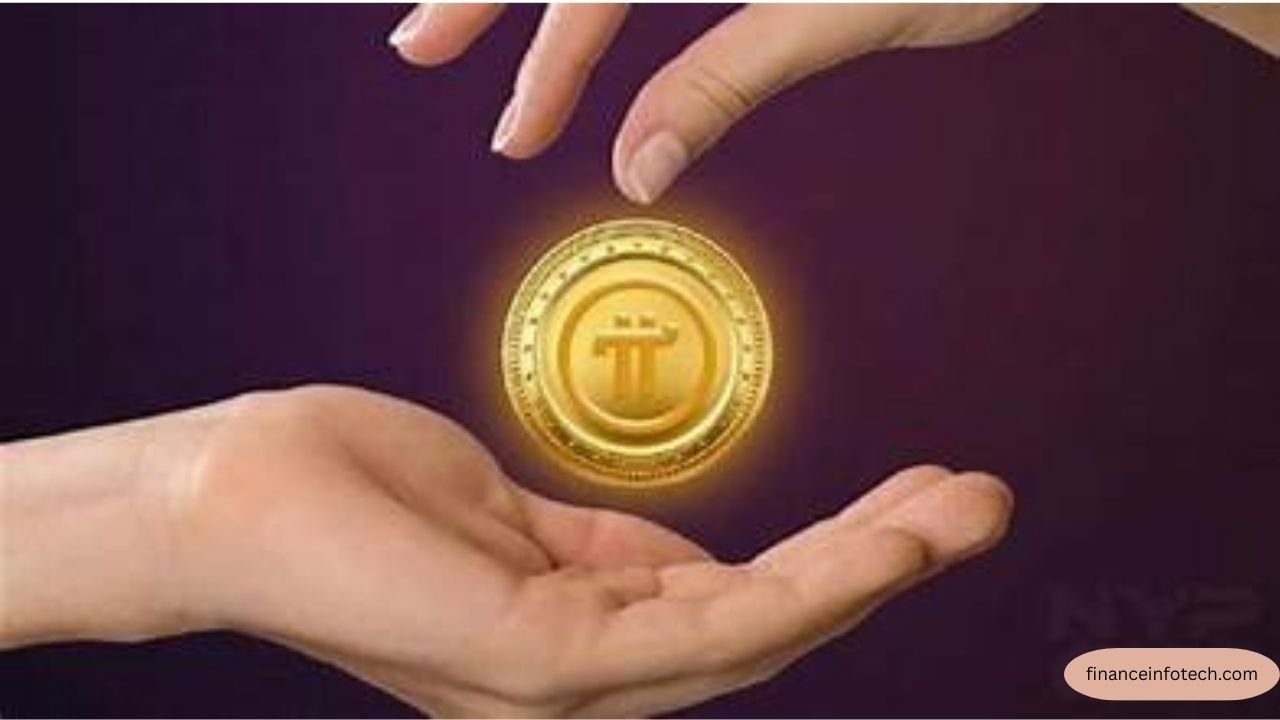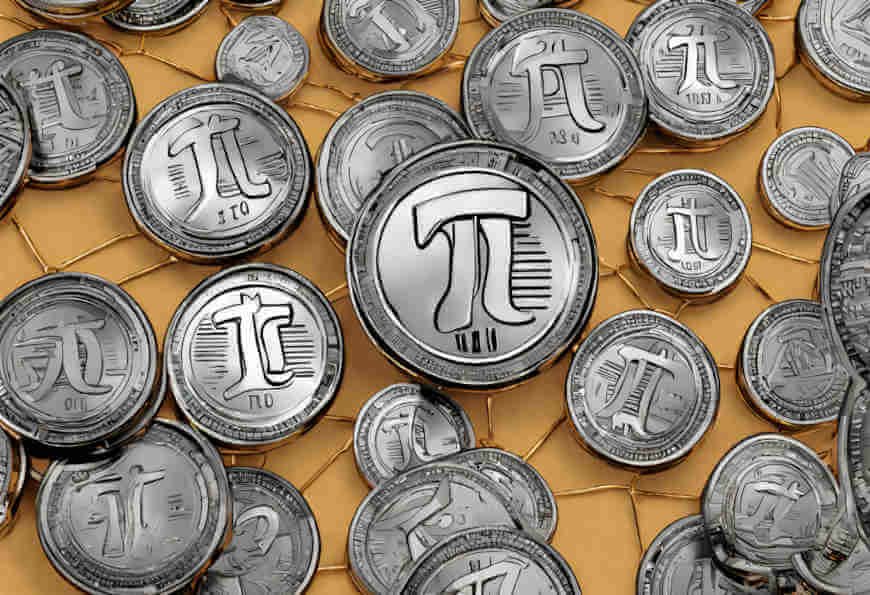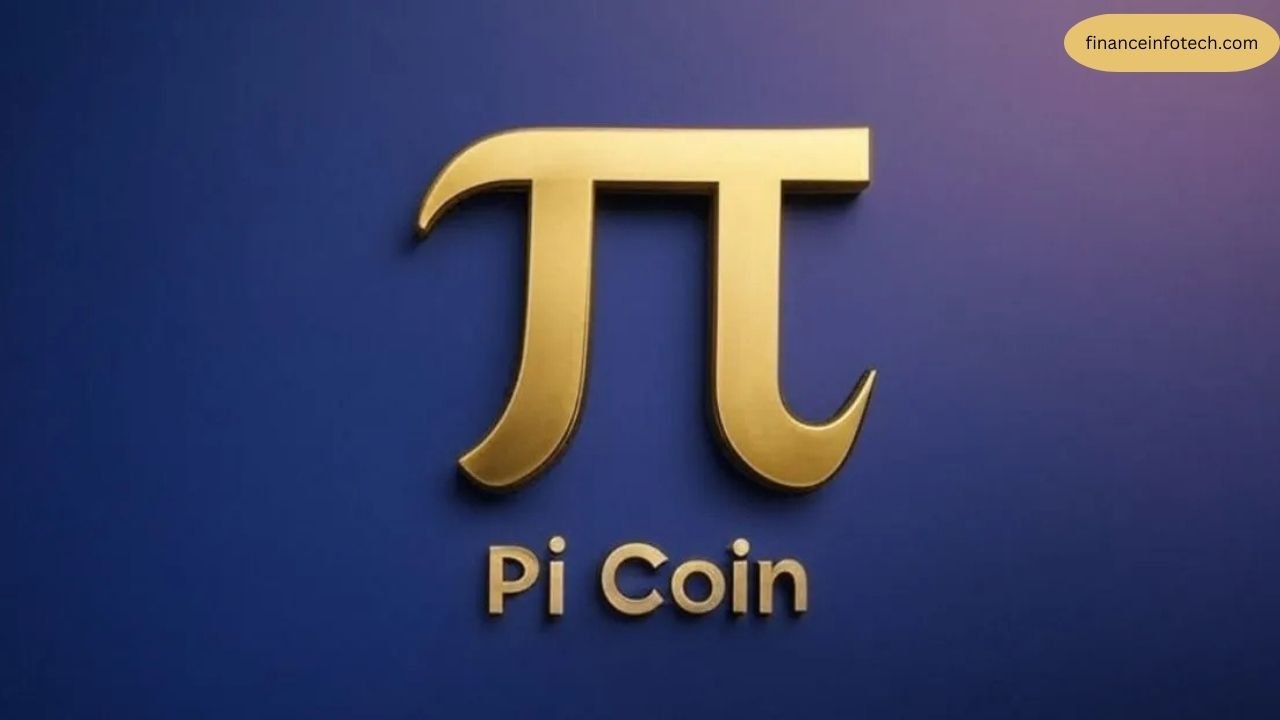Table of Contents
The cryptocurrency world is often a confusing and busy place. As soon as you start to think that you understand Bitcoin and Ethereum, another contender appears, promising to revolutionize the market. This blog is related to financeinfotech.com. The Pi Network, which aims to make cryptocurrency available to all through a mobile app that is easy to use, has drawn millions of users around the world.
The Genesis of Pi coin – A Vision for Accessible Crypto
A team of Stanford University grads launched the Pi Network project on March 14, 2019, which is Pi Day. The project’s core figures are Dr. Nicolas Kokkalis – an expert in blockchain technology and computer science – and Dr. Chengdiao Fan – a computational anthropologist. The stated goal of the project was to create cryptocurrency that can be mined using a mobile device without draining its battery or requiring expensive equipment.
This vision addresses directly one of the largest barriers to mainstream cryptocurrency adoption. It uses a novel algorithm that is based on the Stellar Consensus Protocol. David Mazieres is a Stanford professor of computer sciences and the chief scientist at Stellar Development Foundation. He developed the SCP.

Users of Pi coin
After several mining sessions, the user can become a Contributor by creating a “security circles.” It involves adding 3 to 5 trusted individuals from your network. These circles are used to secure the global graph of trust in the network. The more circles of security, the safer the network.
Ambassadeurs: Users that actively invite new users to join the Pi Network, are known as Ambassadors. Each active user they invite to the platform earns them a bonus.
Advanced users can run Nodes on their computers. Nodes run SCP’s core algorithm and help validate transactions on the Blockchain. The system has been designed to be lightweight, and it is also sustainable. The “mining process” on the mobile application is not true mining as it is traditionally understood. The app does not perform complex calculations, but instead registers the daily check-in of the user and distributes Pi coins pre-minted according to the role and contribution levels. Computer nodes handle the actual blockchain and transactions validation.
What are the challenges and criticisms?
Coin has currently no monetary value. It is not traded on any major cryptocurrency trading exchange. Although informal bartering between peers has taken place, the official value of this currency remains zero. The project is in development since years and the long waiting for the “Open Mainnet”, when Pi could be listed on exchanges, has led to skepticism.
Concerns about data privacy: In order to participate, users are required to provide their phone number and complete a KYC process that involves government-issued identification. Critics claim that the project is a massive data collection operation that harvests personal information of millions of users, under the disguise of a future crypto currency. The core team may deny this, but it is still a valid concern given the digital landscape of today.
Does It Really Decentralize?
Similarities to Multi-Level Marketing Schemes: Due to the heavy emphasis placed on referrals and creating a downline consisting of new users, there have been comparisons with MLM schemes. Although users do not pay to join, a structure that rewards recruiting more than other activities can resemble a pyramid-style model. The success of the project is highly dependent on its ability to grow.
The Pi Network has entered a critical stage known as “Enclosed Mainnet.” During this time, the Pi blockchain will be live but protected by a fire wall. This allows internal transactions within the Pi eco-system between KYC verified users. Pi can be used to purchase goods and services through other users, or apps that are built on the Pi platform.

This phase has two main purposes:
This allows for the network to test in a real world environment with millions users, without being exposed to the volatility and risk of the open crypto markets.
It encourages the creation of an ecosystem based on utility. The core team is keen for Pi to be used in the real world before it becomes an asset that can only be traded.
Everyone is looking forward to the transition to “Open Mainnet”. The firewall will be removed, allowing Pi to connect to other blockchains. The core team stated that the transition would only take place if two conditions were met:
The mass KYC verification has made sufficient progress.
The Pi platform has a robust ecosystem of applications and utilities.
This transition is not a fixed time frame, and this remains both a source for hope and frustration in the community.

Frequently Asked Questions:
1.Is Pi Coin legitimate or a scam project?
A: This question is asked the most. Pi Coin is legitimate in that it’s run by Stanford graduates who have a vision. Its success is not assured. Data collection and the lack of a monetary value for the coin are the main critics. The participation is completely free, so it’s not a traditional scam. It’s more about the risk of your personal data and time.
2 .How do I mine Pi Coin?
Download the Pi Network App from Apple App Store or Google Play Store. To join, you will need an invite code from an existing user. After registering, open the app every 24 hours to start your mining session.
3 .How much is a Pi Coin worth?
Pi Coin currently has an official price of $0. There are no cryptocurrency exchanges that list it. The value that you may see in unofficial listings and price trackers are purely speculative, not reflecting a true market price. This value will be established once the Open Mainnet has been launched and Pi is publicly traded.
4 .Will Pi Coin be worth real money in the future?
A: This is what the project aims to achieve. The strategy of the core team is to first build a solid utility-based eco system, so that the coin will have inherent value before hitting the open market. The future value of the coin depends on its success in launching Open Mainnet, the adoption by businesses and users, and market dynamics. It is not guaranteed to have significant value.
5 .Is it safe for me to provide my ID during the KYC process?
A: The Pi Network uses Know Your Customer (KYC), which is an authentication process, to verify that every user is real and comply with the regulations. The verification is handled by a third party provider. Although the team says that security is a priority, you should be careful when sharing your personal identification documents on the internet. This is a decision that you make based on how much trust you have in the project’s security measures.
6 .What is the purpose behind the security circles?
A: Pi’s consensus algorithm relies heavily on security circles. Each user creates their own circle of 3 to 5 people that they trust. These circles form a global graph of trust that allows the nodes to distinguish between legitimate and fraudulent transactions. This allows users to collectively verify the integrity of the blockchain without requiring energy-intensive calculations.
Conclusion
A promise has not been fulfilled, and this is what defines the project. The coin is worthless, the network is centralized and there are legitimate concerns over data privacy. Pi Coin’s success depends on its ability transition to an open, decentralized mainnet. It also relies on creating a real-world ecosystem that is utility-driven and tangible. Participating in the Pi Network is free for now. It only takes a few minutes of your day.
